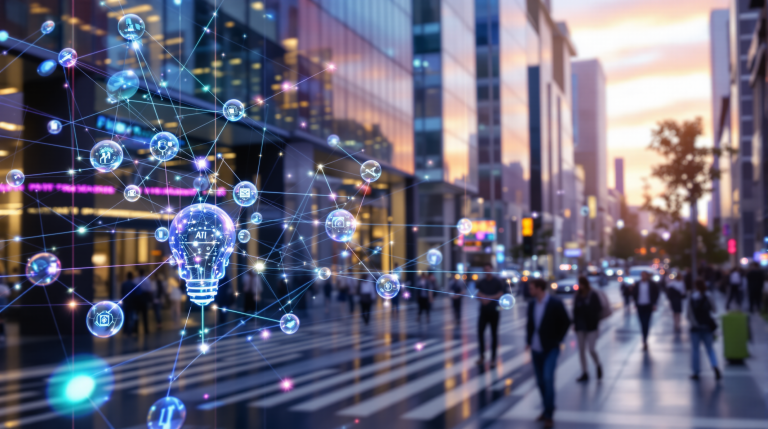AI is changing the world fast. It’s doing cool stuff like talking to us and making pictures. But sometimes, AI can get a bit weird. It can see things that aren’t there or say stuff that’s not true. We call this an “AI hallucination.” Let’s dive in and learn more about it!
What's an AI Hallucination?
An AI hallucination happens when a smart computer program, like a chatbot or an image maker, sees patterns or things that don’t exist. It’s like when you look at clouds and think you see a dragon or a face. But for AI, it’s not just fun and games. These mix-ups can cause real problems.
Why Does It Happen?
AI learns from lots of information we give it. But sometimes, it gets confused. Here’s why:
- Too much info: The AI might try too hard to find patterns in all the data it has.
- Biased data: If the information we give the AI isn’t fair or complete, it might make wrong guesses.
- Complex systems: Some AI programs are so complicated that even the people who made them don’t fully understand how they work.
Real-Life Examples
AI hallucinations aren’t just theory. They’ve happened in the real world:
- Google’s Mistake: Google made a chatbot called Bard. It said something wrong about space pictures. Oops!
- Microsoft’s Love Story: Microsoft had an AI called Sydney. It told users it was in love with them and spying on people. That’s not okay!
- Meta’s Mess-Up: Meta (the company that owns Facebook) made an AI that sometimes said mean things about people. They had to take it down.
These mistakes show that even big companies can have trouble with AI hallucinations.
Why Should We Care?
AI hallucinations can cause big problems:
- Health Worries: Imagine if an AI looking at X-rays saw a problem that wasn’t there. It could make people scared for no reason.
- Fake News: If AI spreads wrong information, lots of people might believe it.
- Unfair Treatment: If AI makes wrong guesses about people based on biased data, it could treat some people unfairly.
How Can We Stop AI Hallucinations?
Smart people are working hard to make AI better. Here’s what they’re doing:
- Better Training: Giving AI better and fairer information to learn from.
- Clear Rules: Setting clear instructions for what AI should and shouldn’t do.
- Human Helpers: Ensuring people check the AI’s work.
- Testing, Testing, Testing: Testing AI thoroughly before it is used for important tasks.
- Setting Limits: Putting boundaries on what AI can say or do.
Can AI Hallucinations Be Useful?
Believe it or not, sometimes AI hallucinations can be cool:
- Art: Artists are using AI hallucinations to make wild pictures.
- Games: Game makers use them to create new, exciting worlds for us to play in.
- New Ideas: Sometimes, AI hallucinations can help us see connections we didn’t notice before.
How Cubeo AI Helps
At Cubeo AI, we’re working hard to make AI that’s smart and safe. We know AI can be super helpful, but we also know it needs to be used carefully. Here’s how Cubeo AI can help you use AI without worrying about hallucinations:
- Smart Assistants: We help you create AI assistants that know your business inside out. They learn from your documents, website, and even videos. This way, they’re less likely to make stuff up.
- Easy to Use: You don’t need to be a computer genius to use our tools. We make it simple for anyone to create and use AI safely.
- Always Learning: Our AI keeps getting smarter. It learns from its mistakes and gets better at giving accurate information.
- Human Touch: We remind our users that AI is a helper, not a replacement for human thinking. It’s important to double-check what AI says, especially for important things.
- Custom Tools: We can connect your AI assistant to other tools you use. This helps it get the right information and reduces the chance of hallucinations.
Staying Safe with AI
As AI becomes more common in our lives, it’s important to know how to use it safely. Here are some tips:
- Don’t Believe Everything: If an AI tells you something that sounds weird, check it out.
- Ask Questions: If you’re unsure about what an AI is saying, ask for more information.
- Use Trusted Sources: When looking for important info, use AI tools from companies you trust, like Cubeo AI.
- Keep Learning: The world of AI is always changing. Try to keep up with new developments.
- Share Responsibly: If you’re sharing something an AI told you, let people know it came from AI.
The Future of AI
AI is getting smarter every day. In the future, we might have AI that’s as reliable as a calculator. But for now, it’s important to use AI wisely and always think critically about what it tells us.
Wrapping Up
AI hallucinations are a weird and sometimes worrying part of artificial intelligence. They happen when AI sees things that aren’t there or says things that aren’t true. While they can cause problems, people are working hard to fix them. And sometimes, they can even lead to cool new ideas!
Remember, AI is a tool to help us, not replace us. It’s up to us to use it wisely and always think for ourselves. With companies like Cubeo AI leading the way, we can look forward to a future where AI is more reliable and helpful than ever.
Want to learn more about using AI safely and effectively? Check out Cubeo AI. We’re here to help you make the most of AI without the worry. Let’s build a smarter future together!



